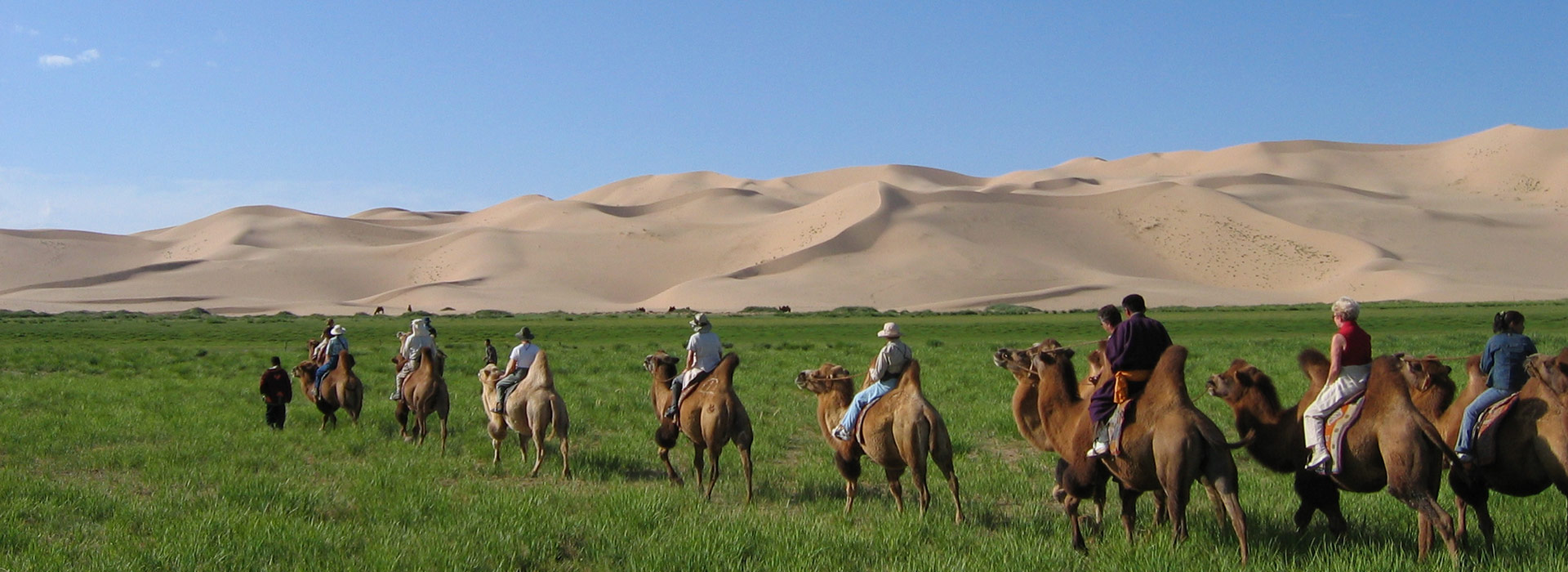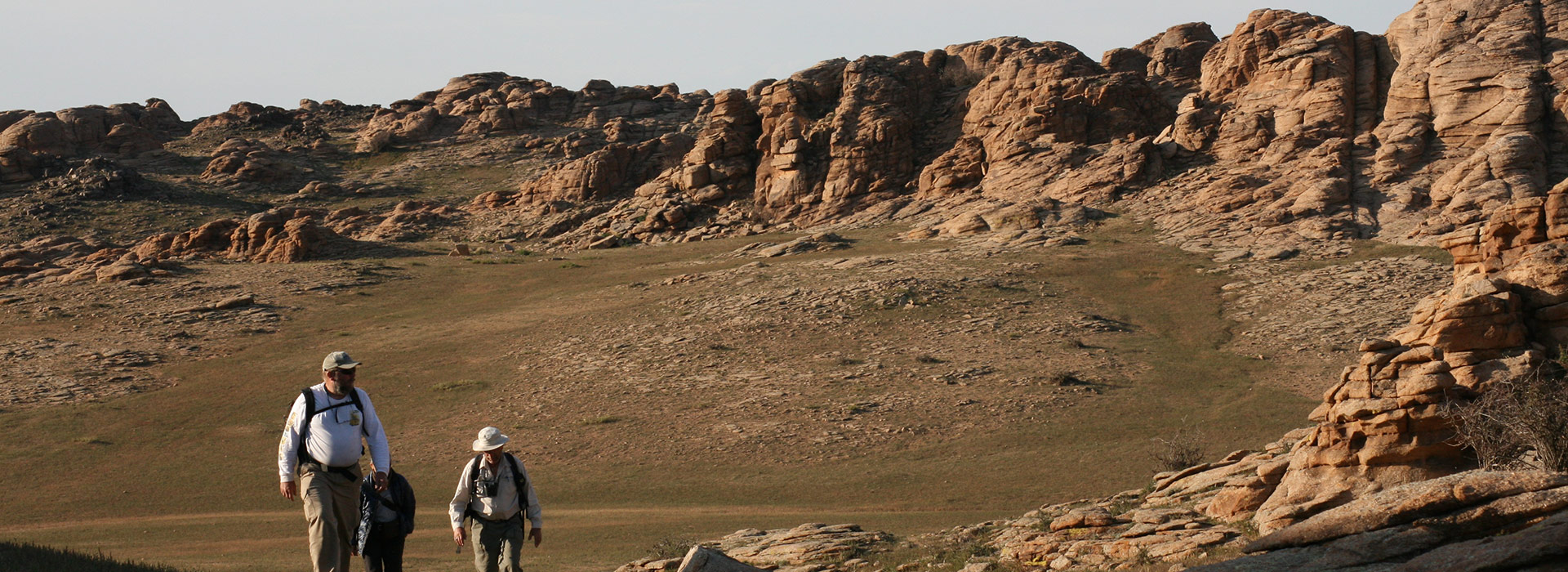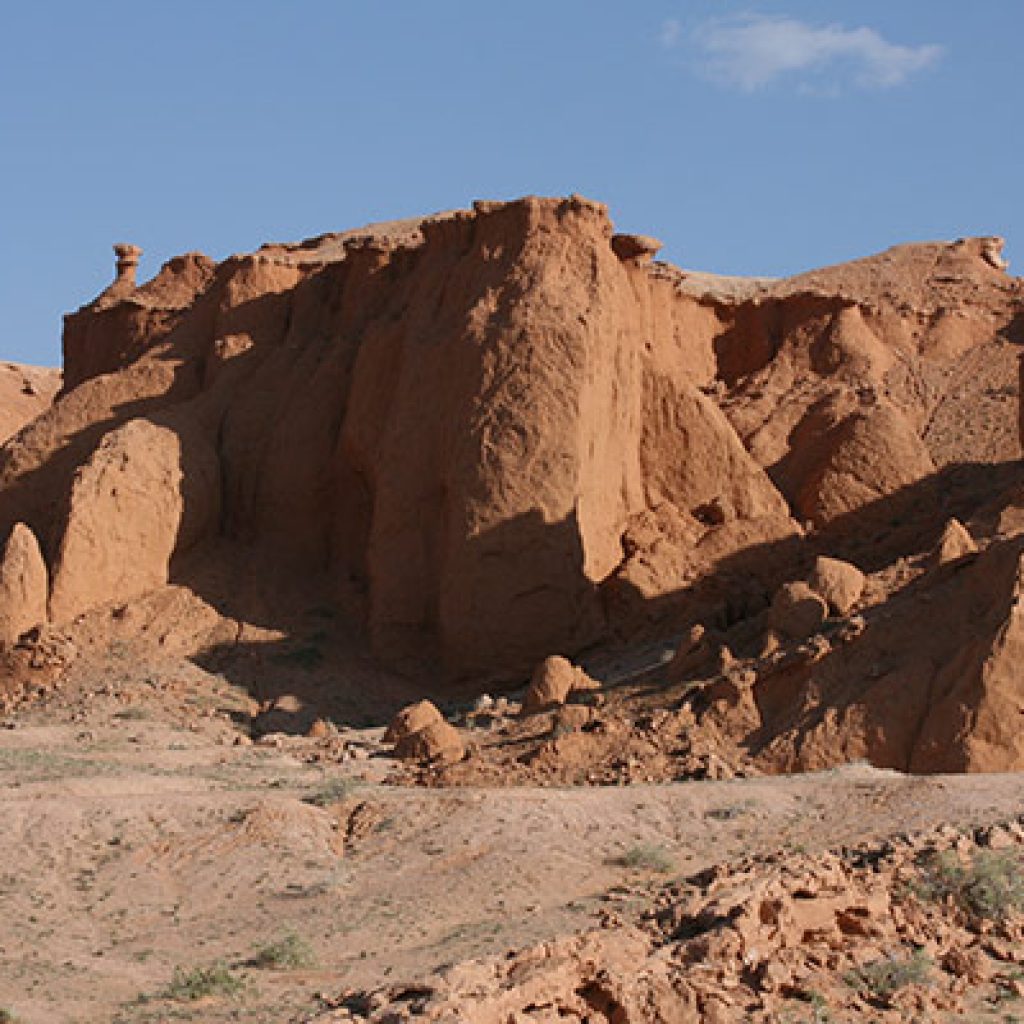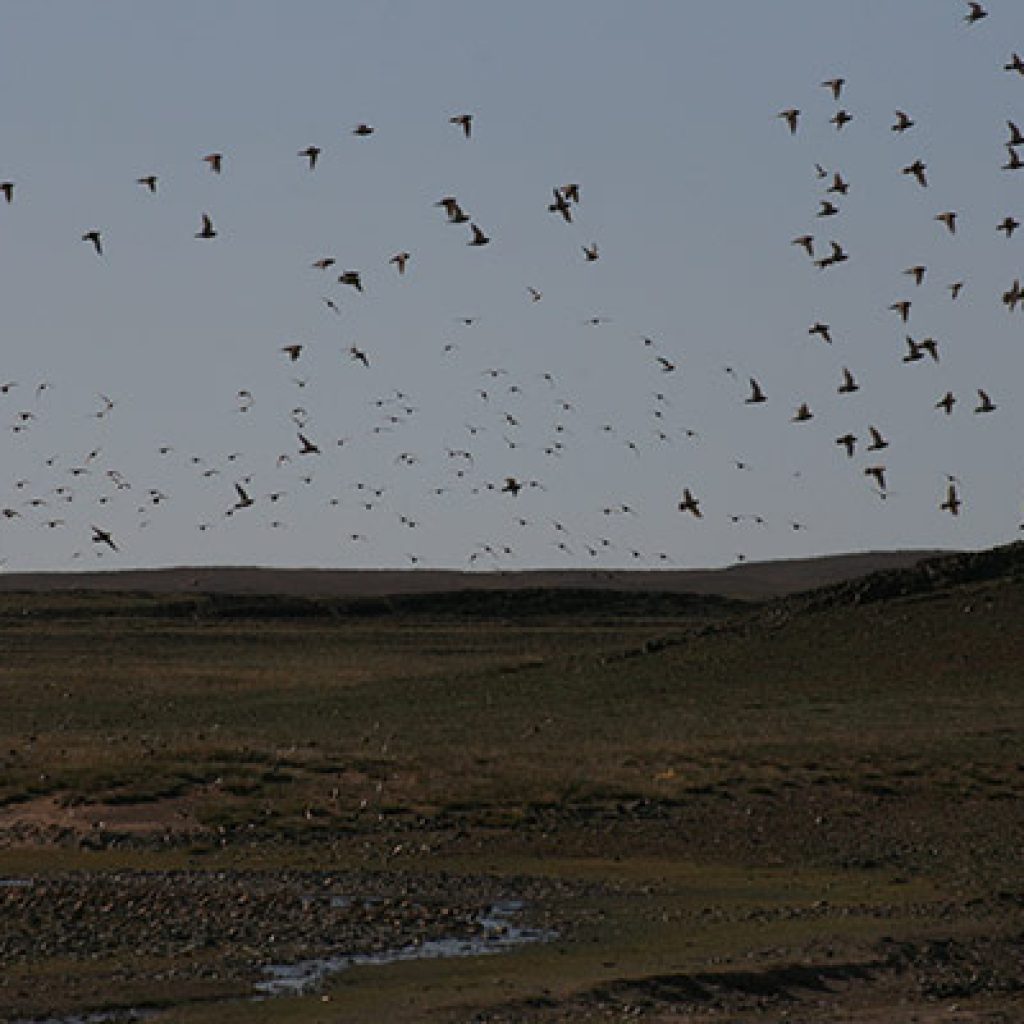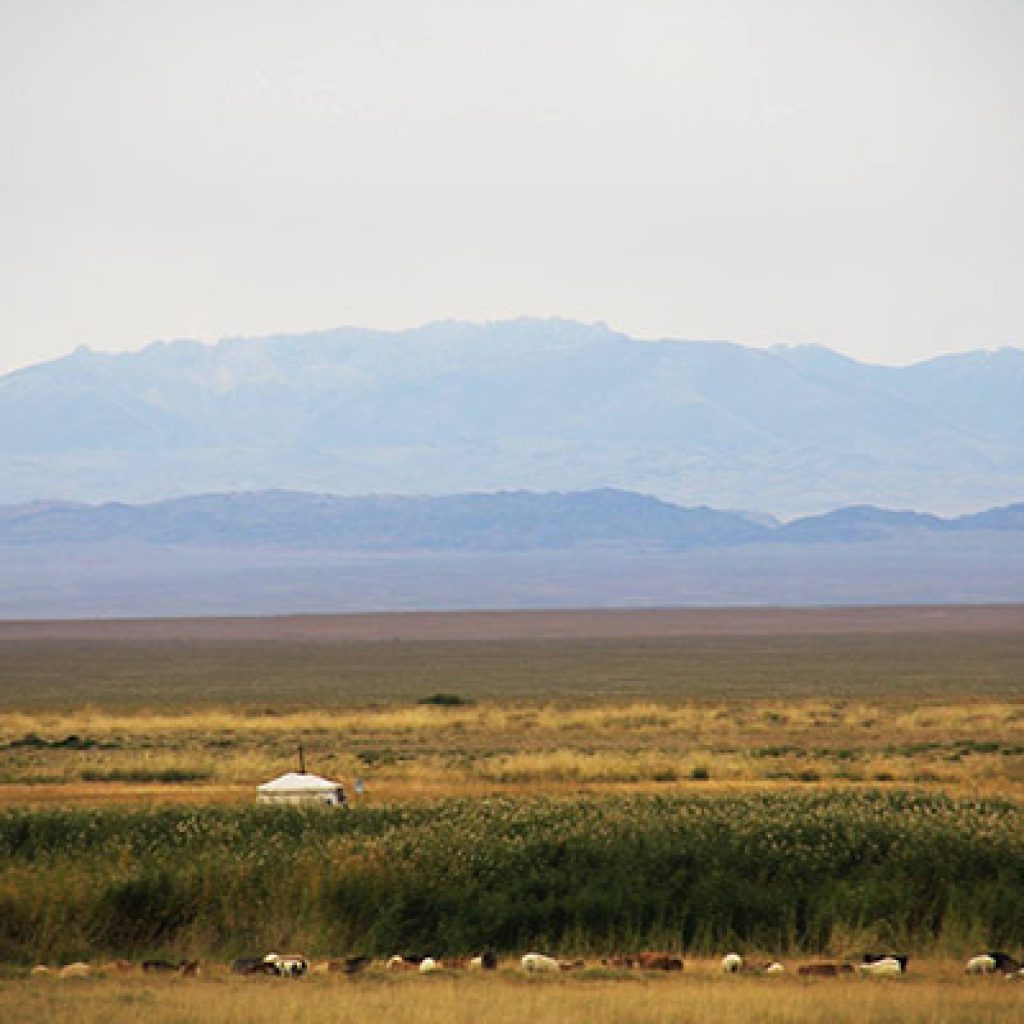The Gobi
Gobi gurvan saikhan mountain
The Gurvansaikhan Mountains are an extension of the Altai into the Gobi. It is a very large national park in South Gobi and covers also some of the surrounding desert steppe zones, as well as Hongor Sands. North of the park is also the famous Bayanzag, which were made famous as the “Flaming Cliffs” by the expeditions of Roy Chapman Andrews in the 1920s. The mountains support some wildlife such as Snow Leopards, Siberian Ibexes and Argali Sheep. The surrounding Gobi steppe has Asiatic Wild Ass (Khulan), Black-tailed Gazelle and Foxes. Traveling in September enhances your chances of seeing wildlife here. Mammals are challenging to see, but bird life is not difficult . Our bird watching trips usually makes sure this national park is on the itinerary.
The famous Yol Valley (Yoliin Am) is a deep ravine where Lammergeiers (Yol means Lammergeier in Mongolian) nest. Birdwatchers are also delighted at short range at most times being able to see the Wallcreepers (Tichodroma Muraria) here. Altai Snow Cock on the ridges, and four species of rose finches in the junipers below.
The Yol ravine used to have permanent ice in its shady parts all through the summer, but nowadays it thaws in August, probably due to global warming. Herdsmen keep yaks here. Most yaks however, are cow and yak cross-breeds which the Mongols call “hainag” (Tibetan: “dzo”).
The Hongor Sands, or the Hongoriin Els, is a spectacular 180 kilometers (112 miles) long sand dune, 210 km away from Dalanzadgad. It is several hundred meters high and just about 300 m wide. It is a superb experience of serenity and solitude to be near these sand dunes. At sunset and sunrise, by moonlight, the shifting light causes these dunes to change their character constantly against the green grass lawn on the leeward side. Along its entire length there is an open stream, the Hongorin Gol, and blue iris bloom in profusion a couple of days in June.
Herdsmen live with their livestock just along the sands, since the pasture is very good on the green grass at the leeward edge of the dunes.
How to travel there:
In the summer season there are daily flights to the airport at Dalanzadgad. We offer 4d/3n and 6d/5n itineraries to take in the most important locations of this national park and Bayanzag. It is a big area, which is why this is a driving destination in great landscapes. People are few and far between.
Far west of Dalanzadgad, in the Nömgön sub-province bordering China, there is an arid plain, which is devoid of any vegetation in the middle, and covered with small shrubs in the extremes. Bordzongobi is a superb wildlife area with an abundance of Black-tailed Gazelle and the endangered “Khulan” or Wild Ass. It is estimated that approximately 2000 Khulans make Bordzongobi their home.
Related regions
What our guests say
Lorem Ipsum is simply dummy text of the printing and typesetting industry.


